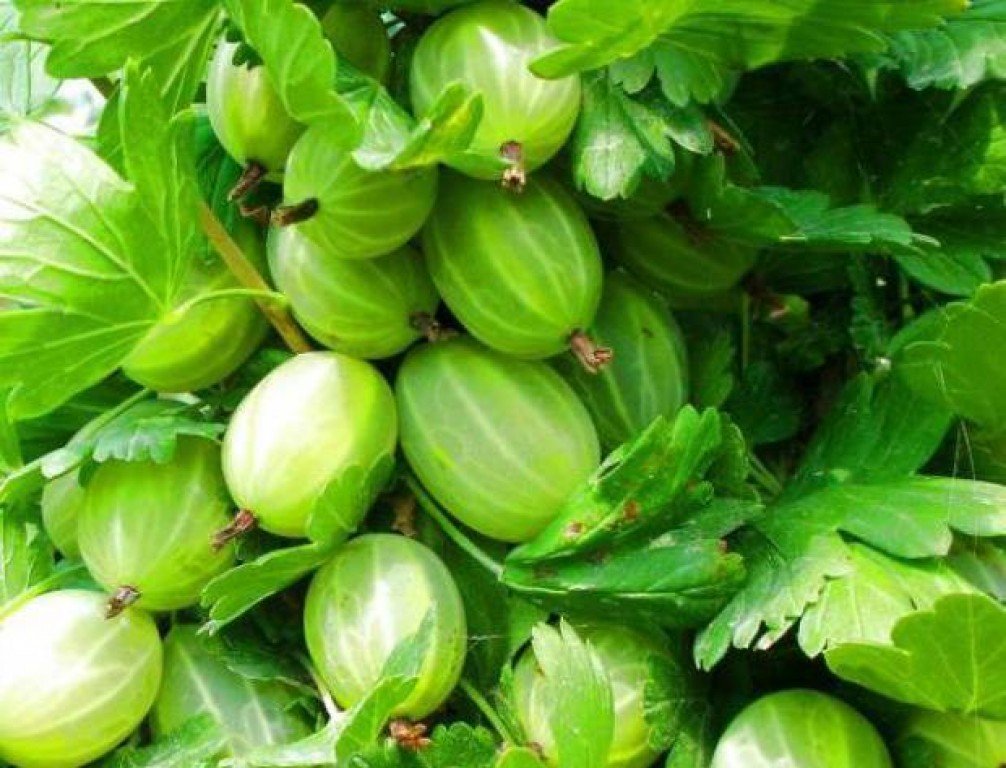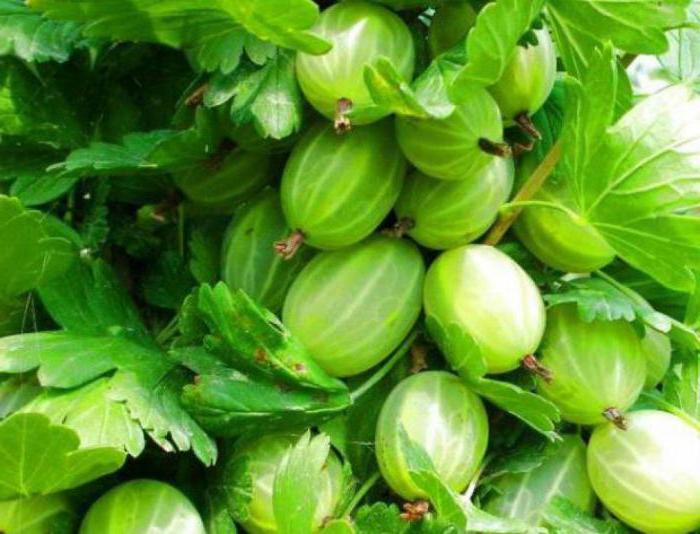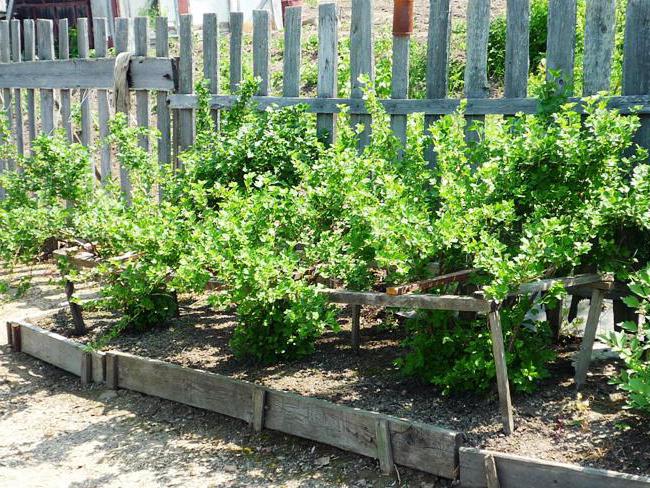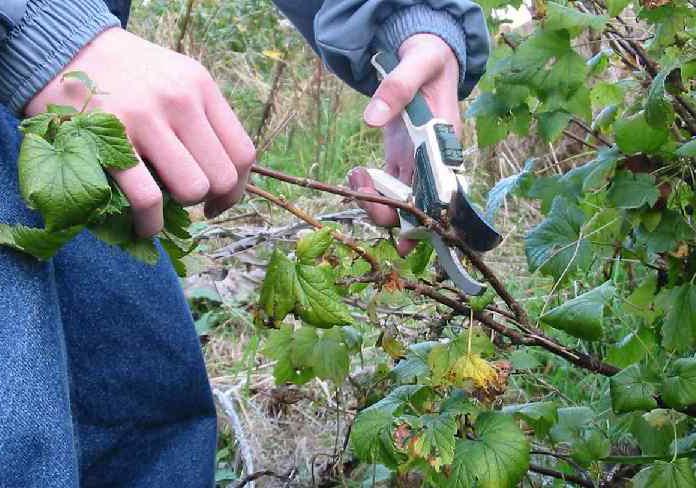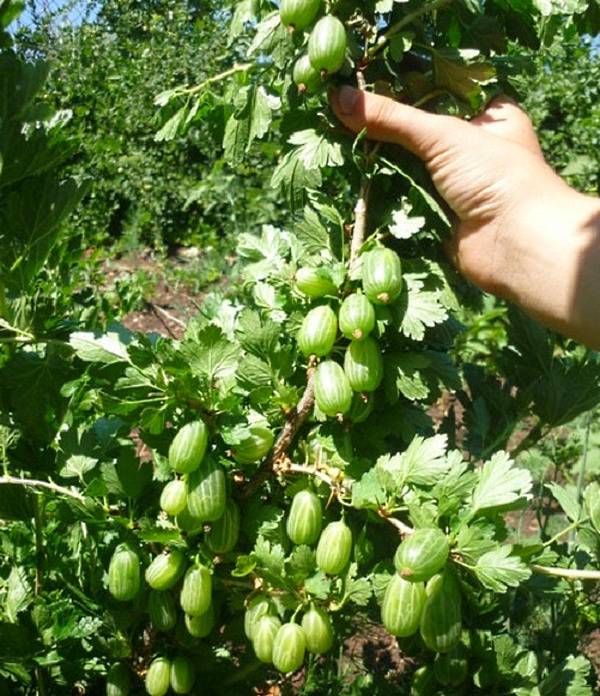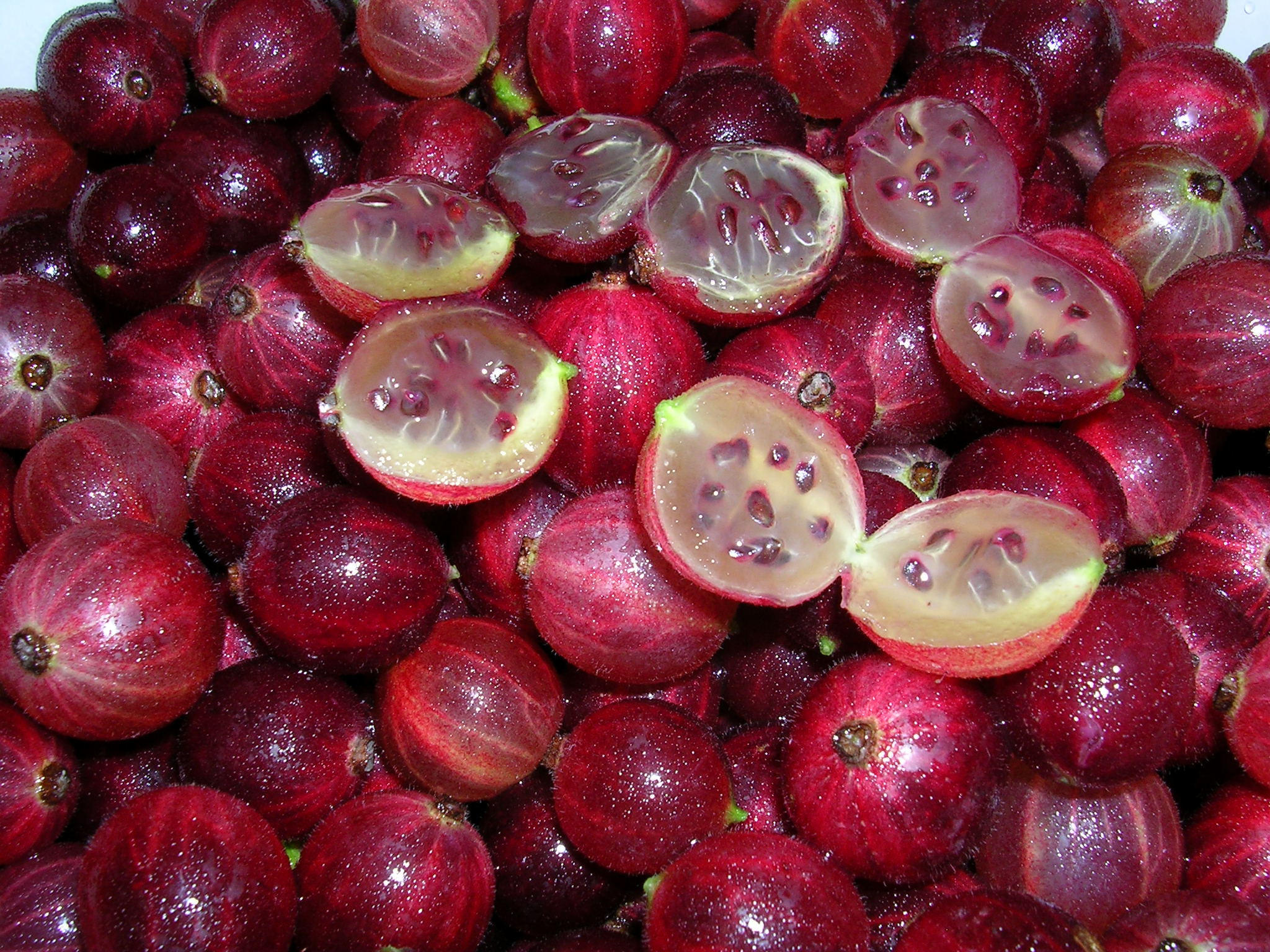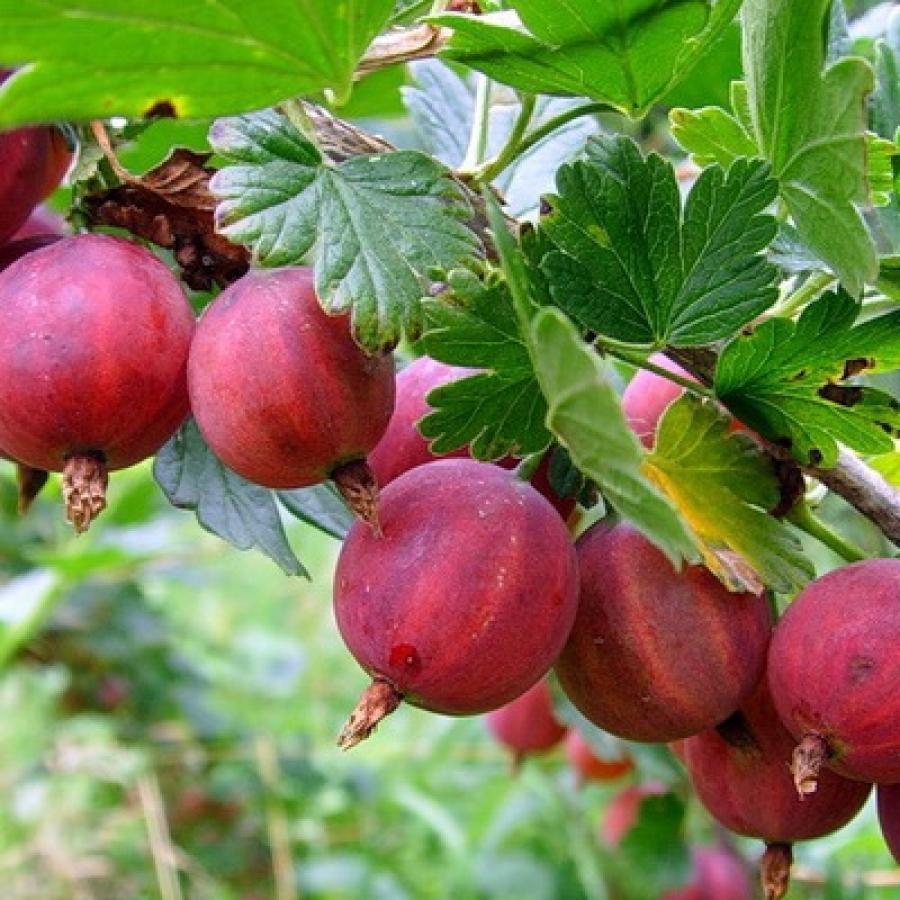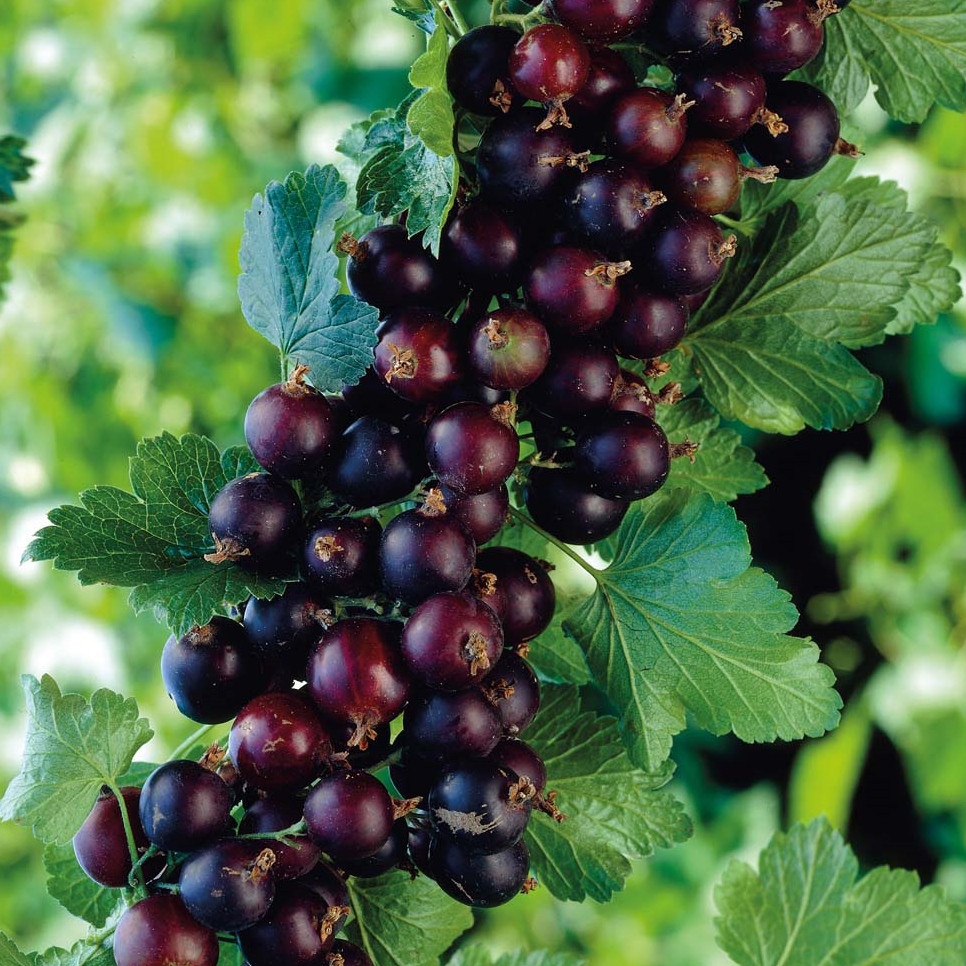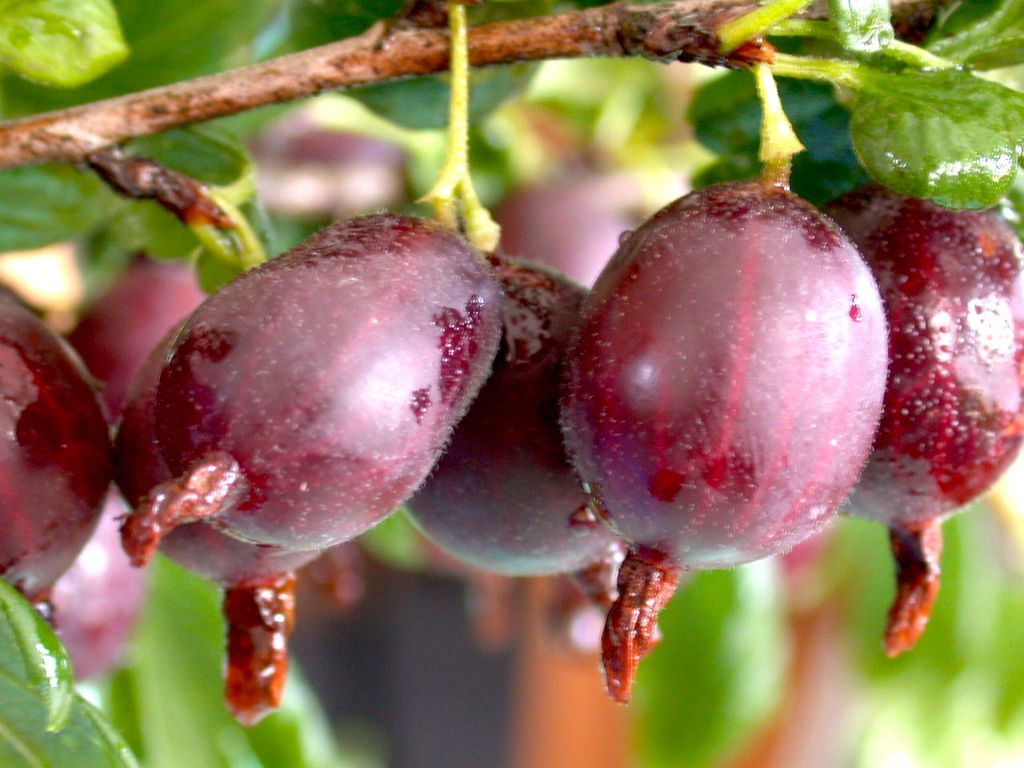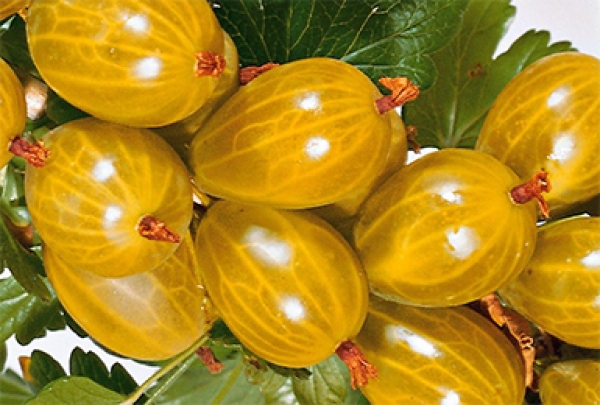Content:
Gooseberries grow in many gardens and personal plots. This is not only a healthy and tasty berry, it is versatile in application and use. The gooseberry is distinguished by its variety of varieties: there are crops with purple, green, yellow and even black fruits. The berry quickly enters the fruiting season, it is fruitful and undemanding to care for.
The history of the creation of the variety
When choosing seedlings, gardeners are guided by frost resistance, immunity to infections, viruses and pests, high fertility. All these conditions are met by the Ural Emerald gooseberry. It appeared thanks to the work of breeders at the research institute of Yuzhno-Uralsk, in 2000 it was entered in the state register, giving an assessment of 5 points for taste. Scientific name - "Ural emerald early dark green". This gooseberry variety was bred for the regions of Western Siberia, therefore it is winter-hardy and resistant to harsh natural conditions, but it can grow and bear fruit well in other climatic zones.
The beautiful gooseberry shrub is very decorative, but it not only decorates the garden, but also brings great health benefits. Its fruits contain 2 times more vitamin C than lemon. Fresh berries are especially tasty, but they are also used for thermal processing. Compote is cooked with gooseberries, marshmallows, marmalade and jam are made.
Important! Only ripe berries are useful; you should not pick unripe fruits.
Characteristics and features
Agrofirms and nurseries offer customers many varieties of gooseberries with colorful berries, but Emerald gooseberries are in special demand. The variety description includes many parameters. His bush is medium-sized, not very spreading. Shoots are shiny, erect, green. Thorns 7 to 9 cm long grow perpendicularly and are located along the entire length of the branches, except for the upper nodes. Shrub thorniness is considered average. It is recommended to protect your hands when harvesting. Buds are oval, small with a sharp tip, light brown. The leaves are shriveled, glossy, deep green, with five lobes, attached to long greenish petioles. Large pink buds are in single-flowered inflorescences, have unclosed sepals, and attract pollinating insects by opening early in the morning.
Large identical berries reach 6-7.5 grams. The shape of the fruit is oblong, the color is transparent green, the taste is sweet and sour with a smooth skin and a small amount of seeds. The gooseberry ripens early. The berries do not crumble and are easily removed from the branches. The purpose of the berries is universal. They contain 9.3% sugar, 2.2% acidity, per 100 g - 20.5 mg of ascorbic acid.
For gooseberries, the yield, depending on conditions and care, varies from 2 to 5 kg per bush. The berries literally shower the bush. They are very useful for the body: gooseberries contain tannins, vitamins and pectins. Experts believe they can remove radionuclides. The variety is ideal for cooking "Tsarskoe jam". Fruiting of the bush begins 3 years after planting and can last up to 20 years.
Gooseberry Emerald is winter-hardy and drought-resistant.It is rarely damaged by powdery mildew, it does not become infected with anthracnose, pine sawflies and moth butterflies do not settle on it. Like most gooseberries, this species often thickens the crown, and it is necessary to cut out excess shoots and remove old dark branches. Pruning is done in early spring or after harvest.
It is necessary to purchase seedlings of the Ural emerald in special nurseries, otherwise you can buy other varieties with a similar name. The markets often offer seedlings under the name "Ural grapes", convincing that these are different names of the same variety. In fact, this is not the case. Cultures are completely different and not similar in their characteristics. They will differ from the varietal plant in terms of fruiting characteristics, fruit size and taste.
Agrotechnics for growing gooseberries
When growing the Ural emerald, they take into account the recommendations of experienced gardeners:
- The shrub is not afraid of the wind and loves sunlit areas. In the shade, the yield is significantly reduced;
- The soil he needs is fertile and moderately moist;
- Planting of young seedlings is carried out in the fall, and reproduction - in the spring;
- Care includes watering, pruning and fertilizing. Fresh manure cannot be used as fertilizer;
- The neighboring gooseberry bushes of other varieties will help to increase the yield.
Landing
Gooseberry Emerald is not afraid of fluctuations in temperature and wind, but it loves loose soil and good lighting. A place for it is chosen on a plain, a lowland with stagnant water and an elevation will not work. The best planting time is September-October, depending on climate and weather. The shrub must have time to take root before frost.
For reproduction in the spring, the layers are bent to the ground, fixed and covered with earth. By the fall, they will take root, and they can be separated and transplanted to a permanent place. When planting in a pit, humus and ash are added. If the soil is poor, dig a large hole and fill it by a third with humus and compost mixed with the soil removed from above. A glass of ash is also added. The shrub is not afraid of deepening, this is only good for it: lateral shoots, once in the ground, quickly root. When planting in spring, 100 g of urea or 500 g of complex fertilizers are applied, but not into the pit, but from above under the bush, otherwise they will go down with watering, and the roots will not get anything. Near a newly planted bush, a roller is made of earth to retain water and watered well.
How to care for the Ural emerald
The care consists in the usual procedures for all berry crops. The variety is resistant to major diseases and only needs pruning, watering, feeding and weeding.
In summer, potassium and phosphorus are added under the bush. Urea is used 3 times per season at weekly intervals. It is diluted with water and poured under each bush with 2 buckets. If a cold winter is predicted, the bushes are fed with nitrogen in the fall.
Gooseberries are watered 2 times a week, spending one bucket per bush in the morning and evening. Especially the shrub needs watering during fruiting in July-August. At this time, flower buds are also laid, which are responsible for the fruiting of the next year. Lack of moisture will affect the harvest.
They carry out sanitary and rejuvenating pruning of bushes. Pruning should prevent crown density and increase yields. Berries are formed on branches up to 7 years, then their number decreases.
After that there are 2 ways:
- Remove the bush and plant a new seedling;
- Rejuvenate the gooseberries with pruning.
Depending on the density of planting and the distance between plants, from 8 to 20 branches are left in the bush. First of all, old branches are removed that interfere with the growth of young animals. 6 years after planting on the bushes, 2-3 shoots are removed every year. Instead, a young shoot grows, and the yield remains at the same level, without decreasing.
Diseases and pests
Diseases and pests do not bother the Ural emerald too much, but preventive measures still need to be taken.
In early spring, after the snow melts and in late autumn, complex protection is carried out by spraying with copper sulfate. Watering should be abundant so that, flowing down the branches, the solution destroys the pests and their larvae.
For the prevention of diseases, the drug Radomil is used.
Attention! For gooseberries, you cannot use preparations with sulfur in the composition, it is harmful to the bush.
Prevention includes activities:
- Weeding. Weeds can harbor harmful insects;
- Spring and autumn digging of soil around the bushes with the introduction of ash;
- Pruning and burning dry branches;
- Destruction of fallen leaves.
Harvesting and processing
Emerald berries are distinguished by their unique taste and amazing aroma. Children are happy to eat them fresh directly from the bush. Fresh compotes are cooked from gooseberries, closed for the winter in jars in the form of jam and preserves, and squeezed out. Gooseberries can be frozen.
Collect it only in dry weather. Fruit harvested after watering or rain has a shorter shelf life. For transportation, containers with thick walls are needed.
Advantages and disadvantages
Among many modern cultures, the Ural emerald gooseberry is considered the leader. The description of the variety includes many advantages, but it has practically no disadvantages.
The advantages of the variety include:
- High yield - with proper care, up to 5-6 kg of berries can be harvested from the bush. The minimum is 2 kg. The berries are easy to pick, they do not grip the branches strongly;
- Early ripening large berries;
- Unique taste and aroma;
- Resistance to pests and diseases;
- The variety is self-fertile and does not need a pollinator;
- Frost resistance;
- Ease of reproduction.
Summer residents note the peculiarity of the gooseberry to easily tolerate slight shading, therefore it is used to compact the plantings, planting in the aisles. But sun exposure makes the berries larger and sweeter. Gooseberries do not need to be pollinated, but if you plant Commander and Beryl next to each other, the yield will increase.
The disadvantages of the shrub are:
- A large number of thorns;
- Dense crown requiring regular pruning;
- Harsh skin of fruit;
- The variety does not like overripening, it is necessary to pick berries on time.
Most of all, many gardeners are frightened by large gooseberry thorns, and they are trying to find thornless varieties, but it is worth knowing that it has not yet been possible to breed a single gooseberry variety without thorns. When choosing a variety, it is better to focus on taste and yield, and in this respect there are few Ural Emerald gooseberries.
